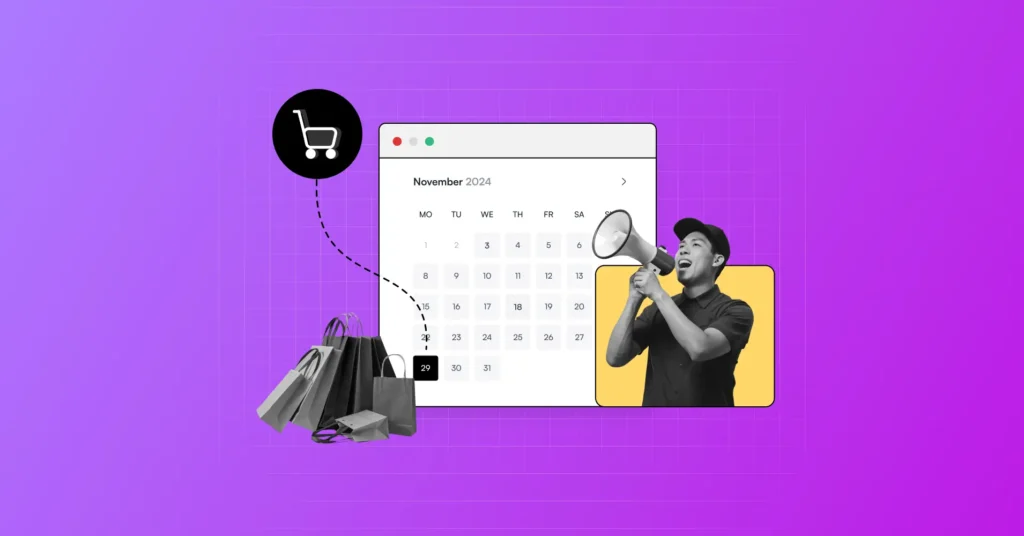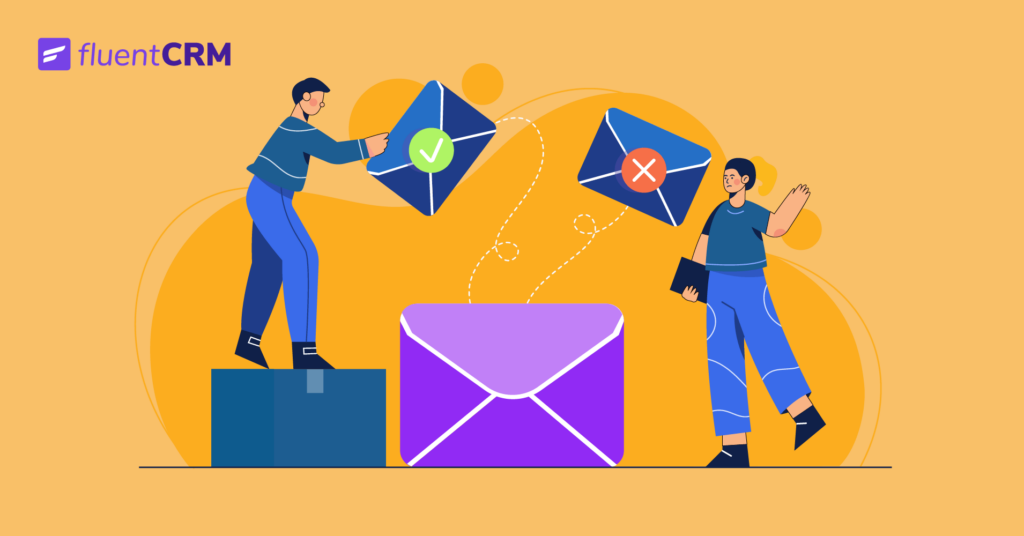
Are alligators and crocodiles the same thing?
No, right? Although we may not notice any differences with the naked eye, they are different! The same can be said for prospects and leads!
As a business owner or digital marketer, you may regularly encounter terms like lead and prospect. And unless you understand their differences, it’s extremely difficult to succeed in your business development process!
But how do they differ?
This article will cover everything you need to know about prospect versus lead. So keep reading to learn more!
Let’s dive in!
What is a lead?
You probably already know that millions of people visit the internet daily. But not every one of them is your customer. You can’t sell medicine to someone who wants books! Herein lies the importance of the lead generation process!
A lead is essentially a person or group with a problem and searching for a solution, but they aren’t sure how to go about it! He is basically a prospective customer interested in your products or services but has not yet decided to purchase them from you.
Even if they aren’t yet a customer, chances are they will be soon!
- Read on to find out more about lead generation in digital marketing.
What is a prospect?
A prospect is a potential customer who sits in the line between a lead and a paying customer. They live in the middle of the sales funnel and have a high chance of converting.
More precisely, a prospect is someone who meets all of the criteria for becoming a customer and is interested in your products or services. They are simply people who are in the process of making a decision. And with a little more effort, you can persuade them to buy your product!
However, how do you find the true prospect of your company among hundreds of leads? —Anyone who meets your qualifications is your prospect!
Let’s take FluentCRM into account as an example. This comprehensive marketing automation solution aims to help small business owners on WordPress manage their customer relationships more easily and affordably.
As a result, any small business owner looking for a simple, efficient, and cost-effective CRM solution and running his or her business on WordPress is a high-potential prospect for FluentCRM.
Prospect versus lead – how do they differ?
Before we examine the differences between prospects and leads, let’s look at how a business or buying decision is made! If we look closely, we can see that almost every customer goes through a specific buying journey.
We can categorize their entire purchasing process into three stages: awareness, consideration, and action!
- Awareness stage: The awareness stage starts whenever a person or business begins looking for a solution to a problem and, in the process, learns about your business, product, or service.
- Consideration stage: Following the awareness stage comes the consideration stage, in which you identify them as potential customers and begin to cultivate their interest in your product. At this point, you initiate a direct conversation with them, demonstrate your service from various perspectives, and insist they buy.
- Action stage: The final stage, which we call the action stage, is when they finally decide to buy your product or services. And a sweet purchasing journey concludes with the stage.
But why are we dragging this out so long? How do they relate to this ongoing discussion of prospect vs. lead?
Let’s get to the point quickly. If we look closely, we can divide the entire sales funnel into three groups: lead, prospect, and customer.
A lead is someone who has reached the stage of awareness. He has arrived at your door in search of a solution. Then it’s your turn to provide them with a solution, impress them, familiarize them with your company, and move them to the consideration stage.
When a lead reaches the consideration stage, he becomes your prospect. It’s now your turn to shift gears! You make direct contact with him and focus on developing a long-term relationship here. In the process, you influence his purchasing decision and demonstrate how your product or service is a perfect fit for him.
What’s the outcome of all these efforts? —a satisfied paying customer!
So, if we summarize everything, the key distinctions between prospect and lead are as follows:
7 effective tips for converting a lead into a prospect
Converting leads into prospects can be difficult, but it is crucial to the success of your entire campaign. A lead is essentially an unqualified individual, and converting them to a prospect is the process of qualifying them based on some basic criteria.
But how will you do it?
This section will shed some light on fundamental tips for converting leads to prospects. First, let’s go over the various stages of the prospect qualification process.
Prospect qualification consists of three stages:
- Organizational Level: You determine whether the lead meets your company’s primary requirements at this stage.
- Opportunity-Level: At this point, you begin doing some in-depth research. You must determine whether the prospect is capable of buying your company’s offering and will truly benefit from your service.
- Stakeholder-Level: At this point, you are very close to closing the deal. However, before making a final decision, you must determine whether you’re speaking with the correct individual. Inquire whether they have the authority to make the final purchase decision. If not, you must identify the appropriate stakeholder to continue the sales process.
Remember to keep each of these stages in mind when deciding on the best approach to sales conversion. Here are 7 pointers to consider:
Make your requirements as specific as possible
You must first determine your key requirements before deciding whether someone is qualified for your product or service. You’ll almost certainly fail if you don’t understand the qualities that your buyers must have. So, first, understand your niche, then identify some must-have requirements and stick to them.
Find out more about your leads
Once you’ve determined what qualities your prospect must possess, it’s time to evaluate all the leads to find your ideal prospect. To do so, you’ll need some basic information about them, such as their age, gender, preferences, and so on. In this regard, various subscription forms can be your main asset, where your leads will willingly share their information.
Begin the lead nurturing process
This is where the real prospect conversion game begins. In fact, the success of the entire process is heavily reliant on this stage.
Here, you immediately begin a conversation with your leads, and your ultimate goal is to build an everlasting relationship through consistent communication. Remember that the trust you establish during the lead nurturing process will determine the success of the rest of the campaign.
Use CTAs effectively
CTA can be your primary tool for guiding a lead through becoming a prospect. An eye-catching, engaging, simple, and well-placed CTA will assist you in getting involved in the buyer’s entire purchasing journey. So don’t overlook the power of a lead-generating CTA on your website.
Information-driven guidance
When a lead qualifies as a prospect, it’s time to take control of their buyer’s journey. And information can be a powerful weapon in this combat. It is preferable to be proactive in identifying and addressing your target market’s pain points related to their fears, uncertainties, and doubts.
Be their friend, the guide they were looking for so desperately. A solid content marketing strategy can be your best weapon in this regard.
Leverage the power of email marketing
If you’re in the digital world and aren’t leveraging the power of email marketing, you’re missing out on a lot of opportunities. A proper email marketing strategy that strictly adheres to every aspects will aid you in prospect conversion beyond your wildest dreams. In fact, it’s the best way to keep in touch with your leads regularly and effectively.
Keep patience
Last but not least, patience is what will keep you ahead of the competition. It is natural for you to consider quitting at some point. But never do this. You are probably so close to success; maintain your willpower for a short while.
Bonus: Leads vs. prospects vs. opportunity
We’ve already discussed the distinctions between leads and prospects, and now it’s time to shed some light on another arcane term: ‘opportunity!’
The term “opportunity” refers to the process of converting prospects. A lead typically goes through three stages before becoming a successful prospect. On the other hand, an opportunity is the final stage of this process. An opportunity is a prospect who has agreed to consider your solution and is about to become a paying customer.
So, the distinction between leads, prospects, and opportunities is as follows –
- A lead is a potential prospect who has the potential to become a customer but has yet to qualify.
- A prospect is a qualified lead with a high chance of becoming a paying customer after a successful prospect conversion process.
- An opportunity is a prospect who is at the end of the prospect conversion process, has made a decision, and is on the verge of becoming a successful customer.
Wrapping Up
Running a business has become easier than ever, thanks to the increased availability of the internet. In reality, the gap between a large and small company is closing every day, and all it takes to move up the success ladder is to follow the right steps.
However, to do so, it’s critical to understand how business funnels work, how to guide someone’s buyer journey, and what the difference between a lead and a prospect is.
We attempted to clarify these perplexing terms in this article, and we hope you found our article informative. Best wishes for your future endeavors. Thank you!










Leave a Reply